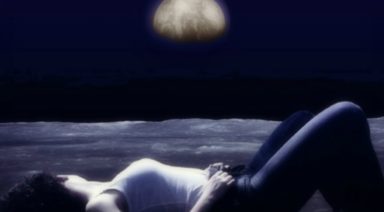Ancient Egyptian Gods

The gods of the ancient Egypt have walked alongside mankind since the beginning of history. They are unique, enigmatic and have fascinated humanity for millennia. The Egyptians were highly secretive when it came to many of their religious and ceremonial beliefs, especially those surrounding magic and the way nature works. Even though we have an immense amount of information about them, much of this has been gathered through the robbing of their graves, giving us a window into a sacred and private part of their society that they never wished to be made public outside of their culture. For this reason, it’s easy to mistake them for a death-fearing, morbid society, but that’s untrue. They loved life and lived it fully.
They danced, drank, wrote poetry, played games, gambled, loved and caroused. Most importantly, they worshipped with an intensity that permeated every aspect of their lives, a quality reflected in their gods.
The Egyptian gods I find the most interesting are reflections of the power of nature itself, anthropomorphized in such a way as to give us keen insight into the people who worshipped them. What follows are some of my favorite male deities from ancient Egypt. (I’ve written about the goddesses of ancient Egypt as well.) It’s important to note that a male deity was in no way superior to, nor more important than a female deity. Each had their importance and was honored completely for their specific contributions. It was normal for a male deity to be sensitive, just as it wasn’t unusual for a female deity to be a mighty warrior.
One of the interesting traits of Egyptian gods and goddesses is that most had human bodies with animal heads.
I don’t believe that the majority of Egyptians actually believed that there was a god somewhere with the head of a dung beetle and the body of a man, but the form was a convention that defined the energy in a way that all Egyptians would understand. It was a brilliant way of showing the forces of nature represented by their gods. By studying creatures in their habitats, the understanding of an elemental force on our planet could be gained. From there, it was a short leap to believe that they could then be sought out for protection and aide. In return, it was natural to deem those totemic animals as being sacred, as the incarnations of those forces of nature and surrogates of the god-forms that rule them.
It also bears mentioning that the ancient Egyptian religion is far from dead. Devotees worldwide maintain faithful alters to Isis, Thoth, Bastet and other members of the Egyptian pantheon. There are entire societies devoted to the observance of the ancient gods, their rituals and ways. They follow the ancient calendars, celebrate the celebrations and embrace an older way of worship. It works for them.
What follows is by no means a thorough representation of the gods of ancient Egypt, but are some of my favorites.
Ptah
This ancient deity is often given credit as one of the primary creators of almost everything. What goes into creation? What would it entail? Imagine that the time has come to create lions. As the creator, you envision the basics of what a lion is, maned, powerful, and so on. From there, it gets more precise, imagining what every lion ever will be, from the beginning of the species to its extinction. Every single detail, every hair, muscle, tooth, claw and behavior is seen, not only of the prototype lion, but for every lion that will ever live. This information is meticulously held in the mind, down to the capillaries. All lions that will ever exist and all their intimate details are seen at once. Only in that moment is the act of creation performed by Ptah pronouncing their name. Ptah did this for everything that exists, and ever will exist. I’ve always thought that once everything was created, he had nothing left to give. He’s shown as a man, understandably wrapped shroud-like.
Horus
Horus is one of the oldest of Egyptian deities. This falcon headed god is popular in ancient Egyptian motifs, and The Eye of Horus has been a symbol of protection and strength for millennia as a representation of the power of the sun. Although a very old god, myths of Horus and his birth to Isis, by his dead father, Osiris, eventually became standard.
He represents the overcoming of darkness by light. From his incarnation as a child on the eastern horizon and hope given by the dawning of a new day, to the ferocity of the noonday sun, a cleanser and purgative of the unclean, to the aging Ra, the setting sun whose very lifeblood stains the twilight sky as a reminder of the sacrifice made for us by the Sun daily, he represents the power of good over evil. His night hours are spent traversing the dangerous underworld, battling the forces of darkness until once again, renewing the hope of another day. The reason for his popularity is obvious; he represents eternal hope and good over evil. The king of Egypt was said to be The Living Horus, an avatar of the god, himself.
Osiris
Osiris is a representation of the forces of civilization upon humankind. His was a gentle energy, one filled with calm love and a desire to ease the burdens of his beloved subjects. Agriculture, irrigation, many of the fine arts and a love of peace are all hallmarks of Osiris. He was murdered by his brother, Set. Miraculously resurrected by his wife, Isis, with the help of Anubis and Thoth, his son Horus was conceived, avenging his father’s overthrow and saving the world from the forces of chaos. After his death, Osiris did not perish. He became the Lord of the underworld, a joyous place full of light, life and all the comforts of the living world. The greatest fear of the Egyptians wasn’t death, as much as it was the possibility of not continuing the life that they loved so much. Osiris became a salvation from eternal sleep and in death, the deceased became one with Osiris. Such is the result of the understanding of our mortality.
Set
The brother of Osiris, Set was a representation of the natural forces of chaos, uncivilized humanity and the blind power of nature. I’ve always thought that Set despised the softening of humankind under the benevolent rule of his brother. Like raw nature, Set could be unpredictable and destructive. Whether jealous, or misguided, he conspired to murder Osiris at a party held in his brother’s honor, thus putting into motion one of the most thought-provoking myths of any time. Without Set, there would’ve been no afterlife and only darkness would’ve reigned, once this journey is over. Interestingly enough, Set was not reviled for his part in this drama. In fact, kings were named after him and he was worshiped throughout the history of ancient Egypt. Like nature, he was a necessary part of the bargain and gave understanding to those who sought the knowledge he possessed.
Thoth
When it comes to defining what it means to be human, we must think of Thoth. Thoth is much more than a lunar deity. He came to represent the very essence of intelligence, thought and wisdom. He was ingenious, clever, an author of magic and ritual, the god of medicine, inspiration and eloquence, defined the 365 day calendar, understood the movements of the planets, gave Horus his eye during the monumental battle with Set, and along with his brother, Anubis, devised the very magic and rituals that brought his slain uncle back to life. Those same rituals and spells were used throughout ancient Egyptian culture in the form of a book of magical formulae designed to allow the possessor safe passage to the afterlife. This book is known as The Book of the Dead, or more precisely, The Book of Coming Forth by Day, a more optimistic way of looking at things.
Thoth was eventually associated with the gods Mercury and Hermes. His epithet was “Thoth, Ur, Ur, Ur” or Thoth Thrice Great. In Greek, using the Grecian form of the deity, it translated to Hermes Trismegistus, not only being the translation of Thoth’s title, but also representing the powerful Triad of the three gods of communication (Thoth, Hermes and Mercury) and the mind. The influence of Thoth and his worship cannot be understated. The sacred Ibis and the sacred baboon are the animals connected to Thoth and he was most usually portrayed as a man with the head of an ibis, holding a scribe’s pallet and a reed for writing. The invention of written language changed the direction of humanity. It gave us history and continuity of thought, allowing us to pass along the ideas of others for millennia, the true definition of eternity.
Anubis
Anubis was the brother of Thoth. This jackal, or dog, headed deity perhaps captures the imagination more than any other Egyptian god. His was the realm of the mysteries. He was not only a protector of the departed and their tombs, but also the god of embalming and mummification, the prerequisite for the continuation of the soul into eternity, according to Egyptian doctrine.
I’ve always found Anubis to be wonderfully mysterious. Anubis was important as a keeper of the mysteries. He was also the Psychopomp, the entity designated to guide us from the realm of the living to the land of the dead. He took the departed by hand into the hall of judges, where their hearts were weighed against the feather of Ma’at, the goddess of truth. If the aspirant to eternity passed the interrogation of the 42 judges, Anubis ushered them to meet Osiris. Once accepted, an eternity of joyous life was their reward. He is a natural deity of powerful magic and work on other planes.
Perhaps the most famous representation of Anubis is the breathtakingly beautiful statue found in the tomb of Tutankhamen. Like a faithful and ever vigilant watchdog, the statue lies alertly waiting for anyone who dares to disturb the eternal slumber of the king. I can only imagine that it was unnerving for Howard Carter and his group to see that image for the first time, as a beam of light pierced the darkness of millennia and exposed its beauty. Modern representations of Anubis, showing him muscular and massive, completely miss the point of his gentle but powerful nature. He reassures and guides during the most uncertain time possible.
Kheper
Kheper was the god of becoming, evolution and being. A symbol of creation and of the persistence of existence, his image was the scarab beetle, an insect that lives by feeding on nutrients left in animal dung. To understand this deity better, I suggest you study the lifecycle of the scarab. You’ll come to understand much about the ancient Egyptians, as well as their uncanny ability to deliver complex concepts in symbolic forms. If you search deeply enough, you may also discover a hint as to what the pyramids might’ve been and why they were designed the way they were.
There are numerous other fascinating deities in the ancient Egyptian pantheon, but further discussion is beyond the scope of this article. I urge you, gentle reader, to not only do your own research, but to also do your own thinking.
Far from being ignorant or overly superstitious, the ancient Egyptians were thinkers and philosophers. Above all, they loved being who they were and loved their gods, for it was they who protected them and ensured the quality of their lives, then and forever.
Until next time, I wish you all peace and love.
What is the Meaning of Lokah Samastah Sukhino Bhavantu

In times of great change and global uncertainty, we are sometimes at a loss to find stability and peace within. Yet, we are supported endlessly by the wisdom of the ages. Lokah Samastah Sukhino Bhavantu is a mantra of power that assists us in our spiritual evolution and acts as a blessing for the world.
Lokah Samastah Sukhino Bhavantu or लोका: समस्ता: सुखिनो भवन्तु is a Sanskrit mantra which means:
“May all beings everywhere be happy and free, and may the thoughts, words, and actions of my own life contribute in some way to that happiness and to that freedom for all.”
By chanting this peace mantra, we move from our personal selves and radiate a prayer of love for the world around us. It takes us from the egoic, little self and its limited worldview and radiates a powerful warmth. It is a reminder we are a part of the universe and can positively impact all of creation.
Though not a traditional Vedic mantra, Lokah Samastah Sukhino Bhavantu is a Sanskrit prayer (or sloka). It has been used for many centuries to invoke greater states of compassion and peace. Often said at the end of yoga practices, it’s an invocation for personal and collective peace. “Do unto others as you would have them do unto you” may be the closest Western equivalent. Yet, the impact of this ancient mantra is far grander than simple human kindness.







